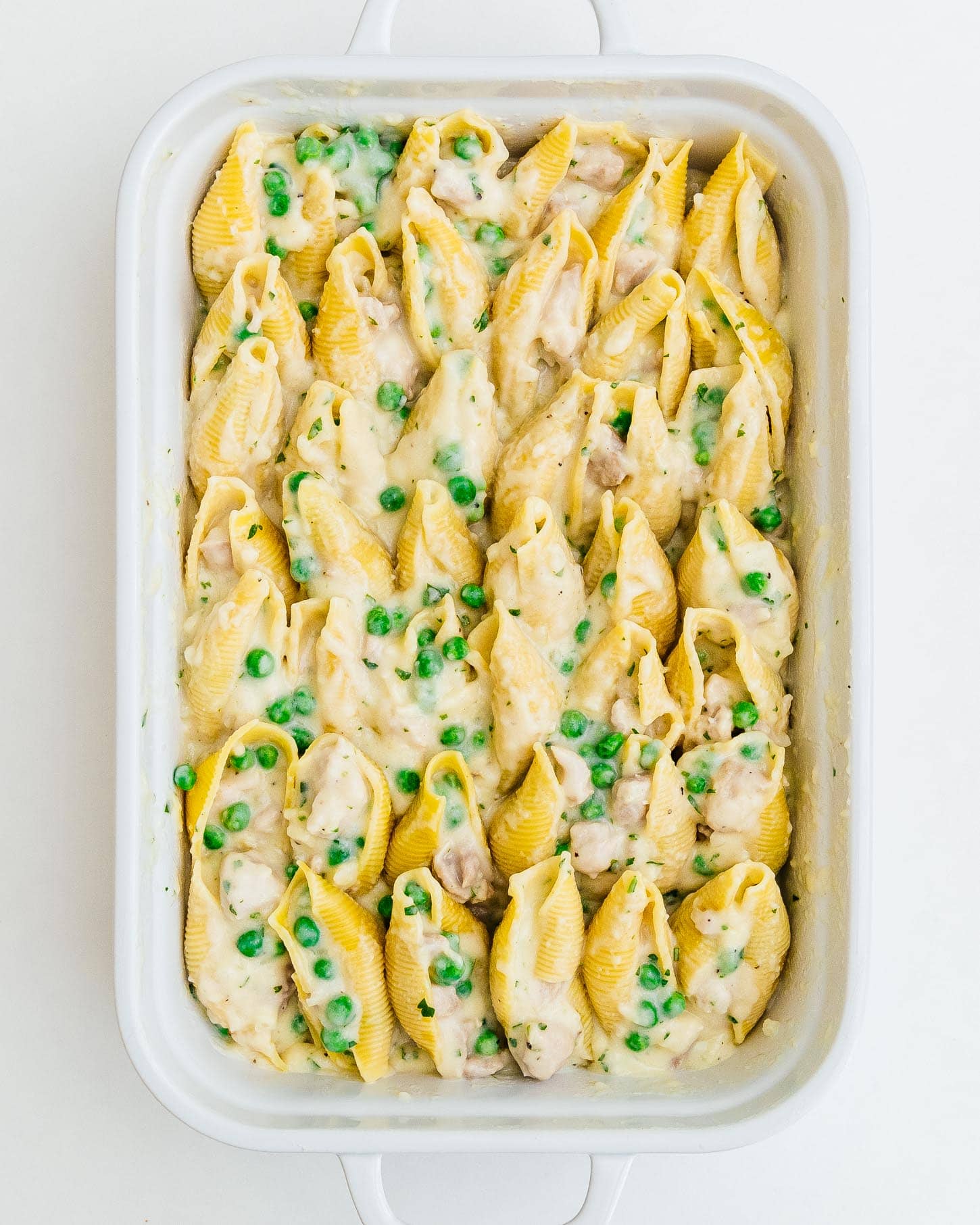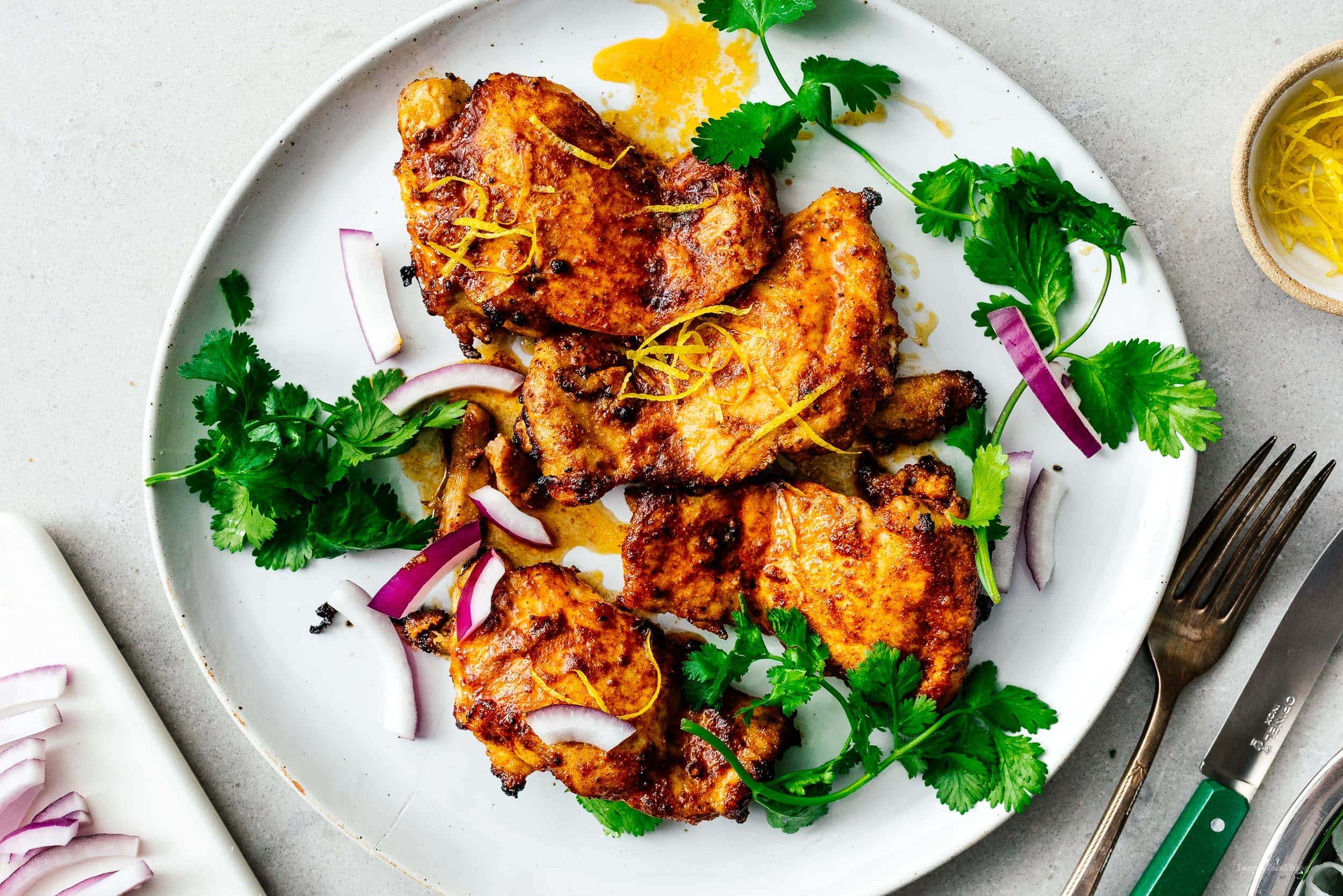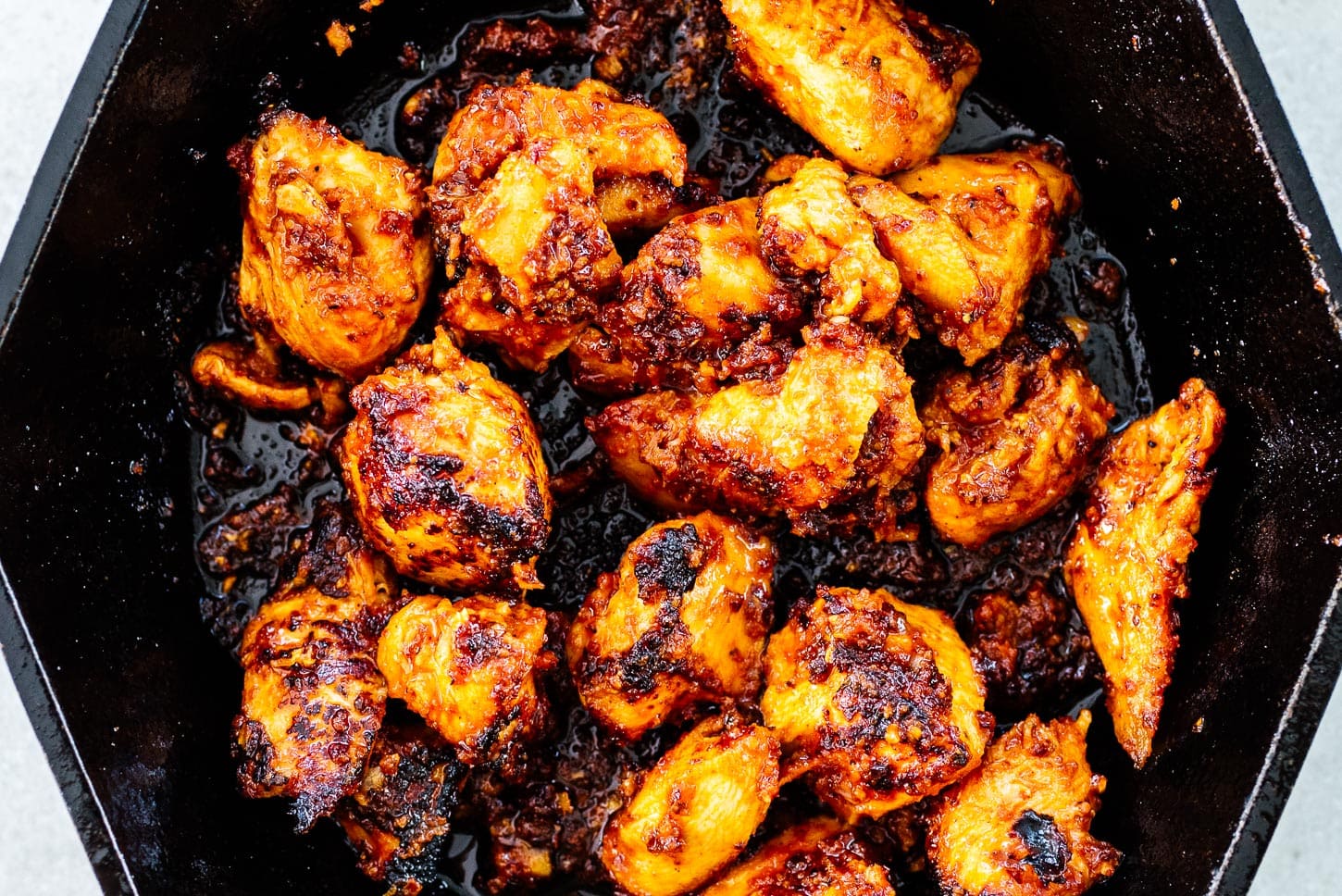
Do you love spicy things? If so, you probably love buldak, and you’ll probably love these buldak noodles too.
It’s fiery hot, spicy red, and so, so good. It’s one of my favorite things at Korean restaurants even though it’s so spicy I can’t stand it. It’s also super popular for Korean BBQ. I especially love it with cheese!
What is buldak?
Buldak, aka fire chicken, is a spicy barbecued Korean chicken dish. “Bul” means fire and “dak” means chicken. Buldak is bite sized pieces of chicken doused in a spicy sauce made with gochugaru, gochujang, soy sauce, jocheong (rice syrup), garlic, and ginger. It’s a pretty new dish that became popular in the early 2000s both in part to buldak restaurants and Samyang buldak instant noodles.
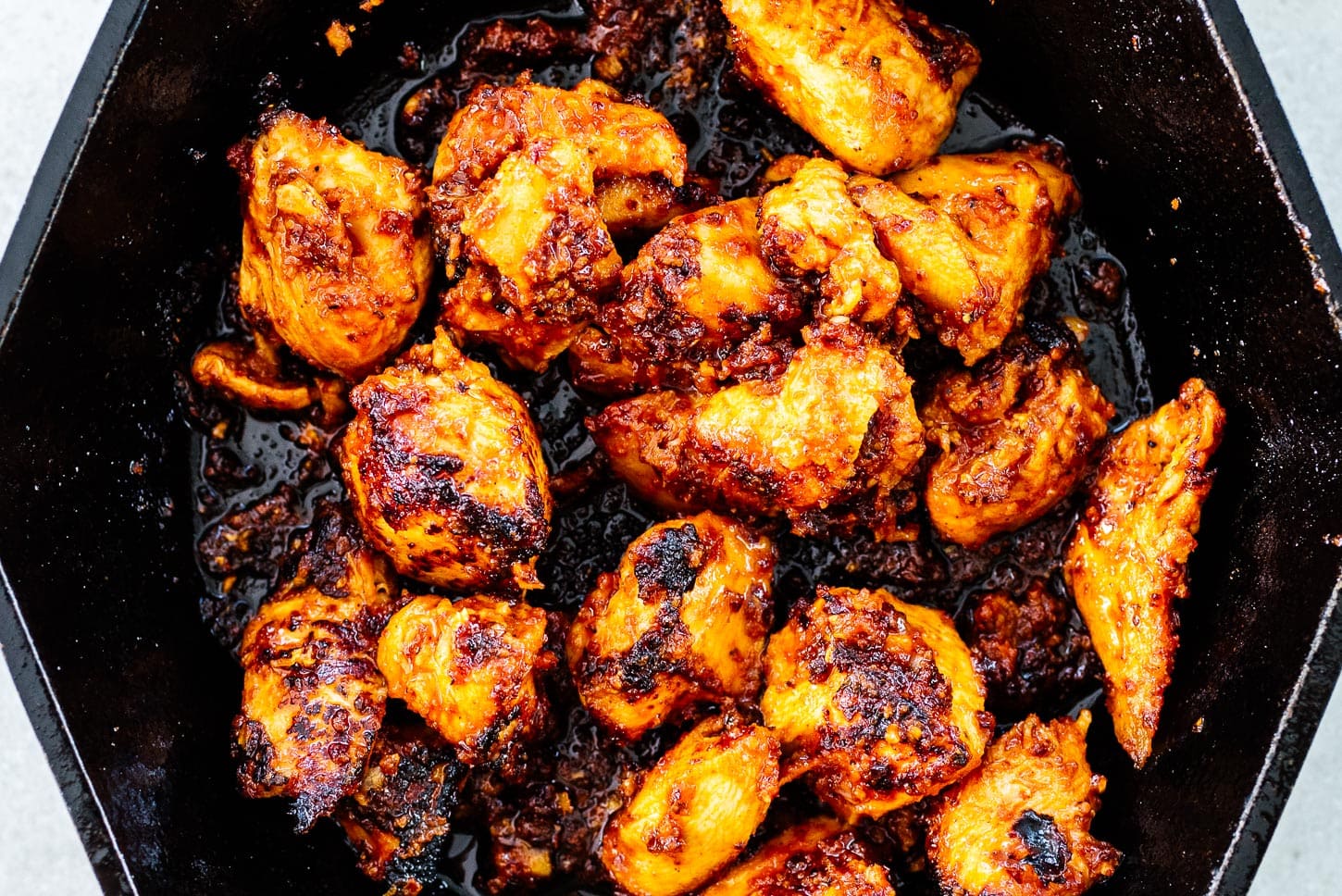
What are buldak noodles?
Buldak noodles, made famous by popular Korean brand Samyang are SUPER spicy instant ramen noodles. They’re called buldak bokkeum myeon or hot chicken flavor ramen and essentially they’re instant ramen that are buldak flavored. They are one of the spiciest instant noodles available in the world and there are several different flavors. Unlike most instant ramens that are soupy, buldak noodles are a sauced noodle: after the noodles are cooked, they’re drained and mixed with the buldak sauce. The noodles are incredibly popular and Samyangs best selling noodle.
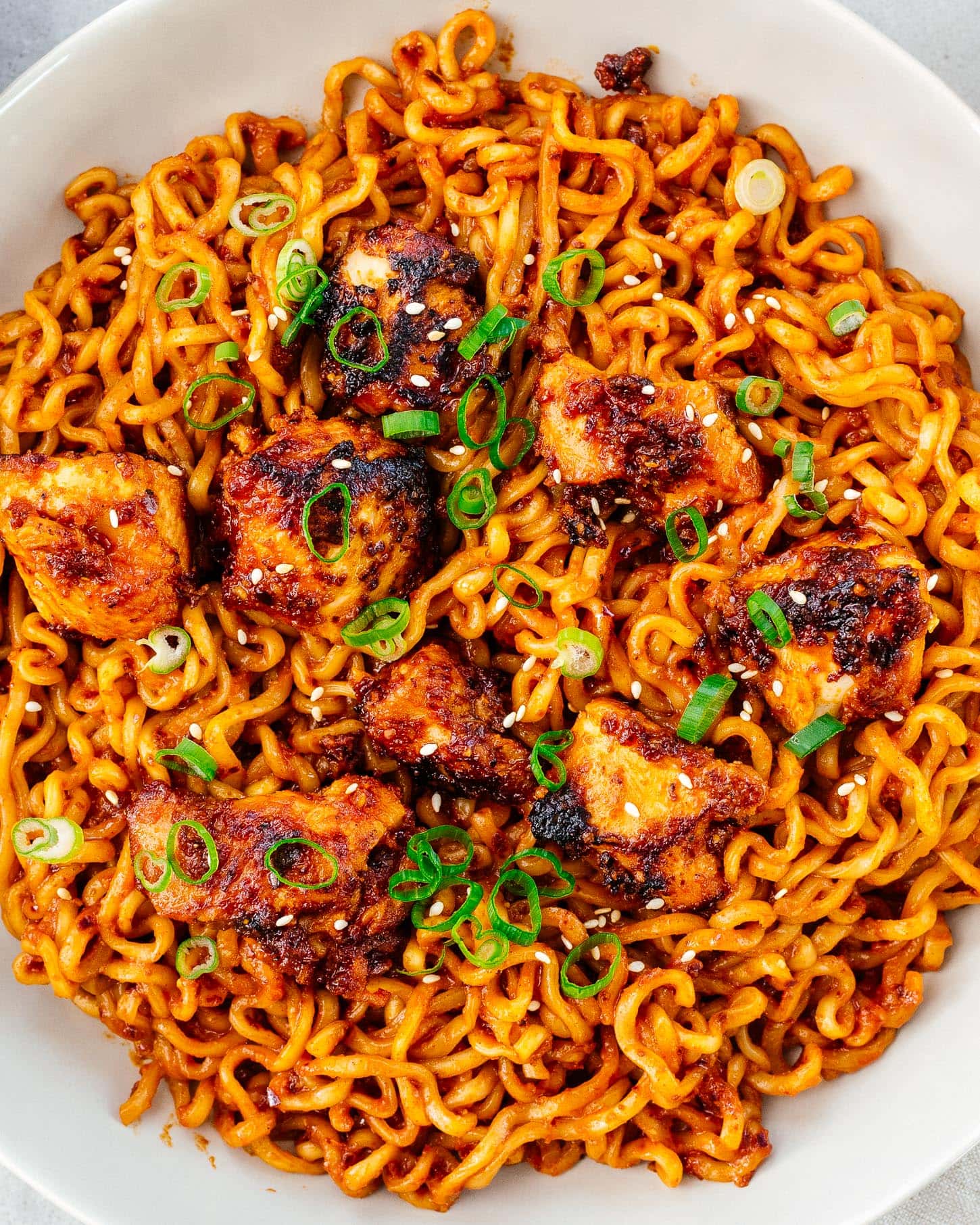
How spicy is buldak?
It’s pretty darn spicy! Every one’s spice tolerance is different but I will say that the spice of buldak is one that builds and builds.
Are buldak noodles the spiciest noodles?
The original buldak bokkeum myeon hot chicken flavor ramen are super spicy at 4,404 Scoville units, but they aren’t the spiciest noodle Samyang makes. The spiciest noodle is the buldak bokkeum myeon mini (hot chicken flavor ramen mini) which is 12,000 Scoville units.
What is in buldak sauce
- gochugaru – Korean chili flakes bring smokiness and a bit of heat and crunch.
- gochujang – This is where the majority of the spice is coming from, especially if you use an extra spicy gochujang.
- soy sauce – soy sauce adds umami and saltiness. If you have Korean soy sauce, use that, otherwise the next best for this recipe is Japanese soy sauce.
- sugar – a little bit of sweetness accentuates the spicy heat. The combo of sweet and spicy is classic in Korean food. Traditionally they use jocheong (rice syrup) but we’re going to go with sugar for ease.
- garlic – fresh garlic adds the heat. If you a garlic lover, raw garlic is essential, add as many cloves as you can handle. For the chicken, the garlic cooks, but if you’re just making buldak sauce for noodles, the raw garlic will surprise you at how spicy it is.
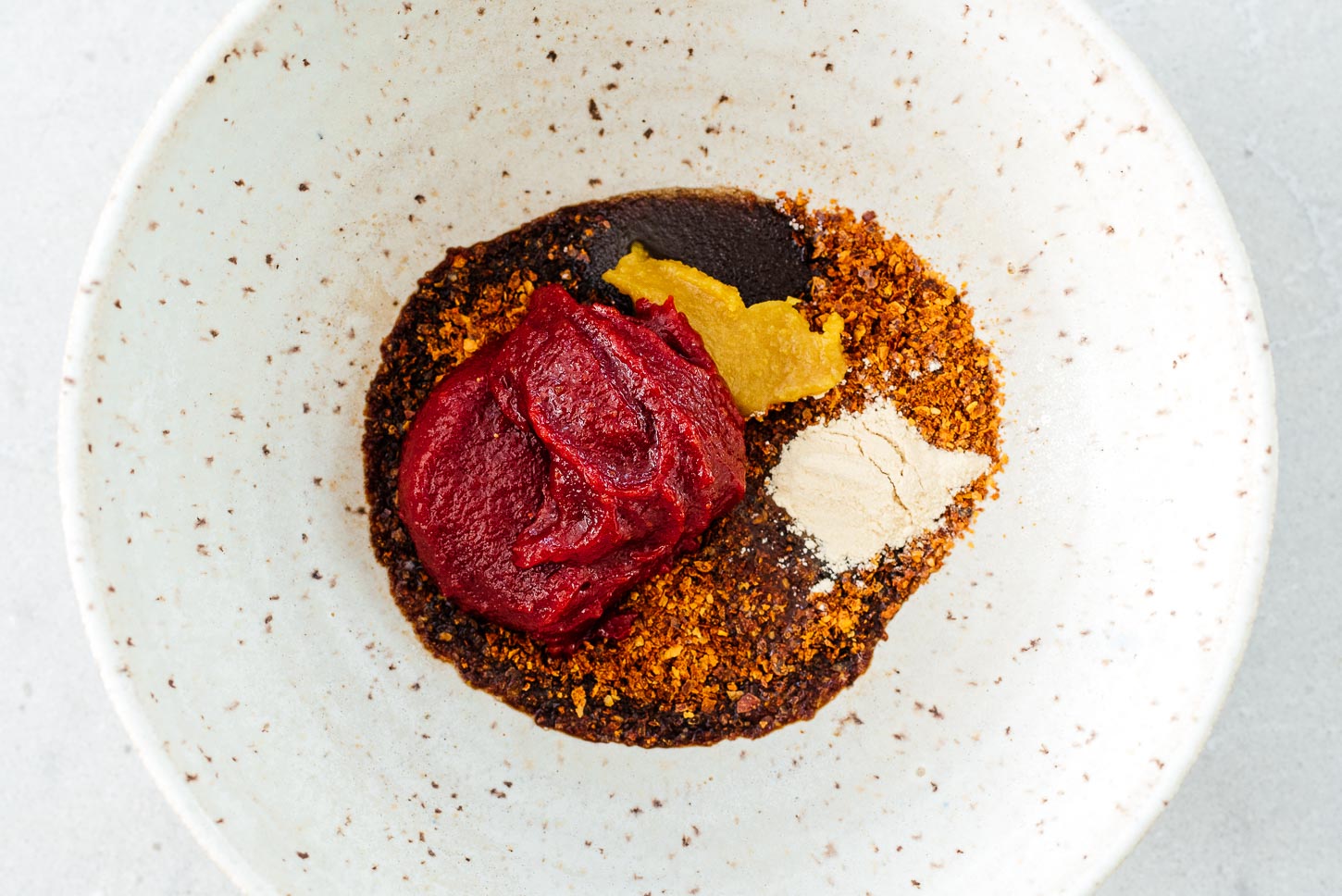
Gochujang vs gochugaru
If you’re not familiar with Korean food, you might not know what gochujang or gochugaru is.
- Gochujang is a spicy Korean sauce. It’s savory, sweet, spicy thick fermented paste made from chili powder and sticky rice. It adds sweet and heat and a ton of flavor. Traditionally it comes in tubs, but these days you can find it in convenient squeeze bottles in the Asian aisle of literally any grocery store and online, of course.
- Gochugaru, on the other hand, are Korean chili flakes. Korean chili flakes are fruity, sweet, smoky, sun dried bright red flakes. They’re not too spicy and their heat is gentle and delicious. I always buy coarse gochugaru which looks like flaky sea salt. They usually come labeled with mild, medium, or hot, so you can buy them according to your spice preference.
What kind of noodles for buldak noodles?
You can use any kind of noodles but if you’re going for the Samyang style buldak noodles, instant ramen noodles are best. You can use any pack you like, just throw out the seasoning pack. We like Nongshim Shin Ramyun noodles because they’re are thick and chewy. If you don’t have any instant ramen noodles on hand you can even try this sauce with spaghetti or udon.

How to make buldak noodles
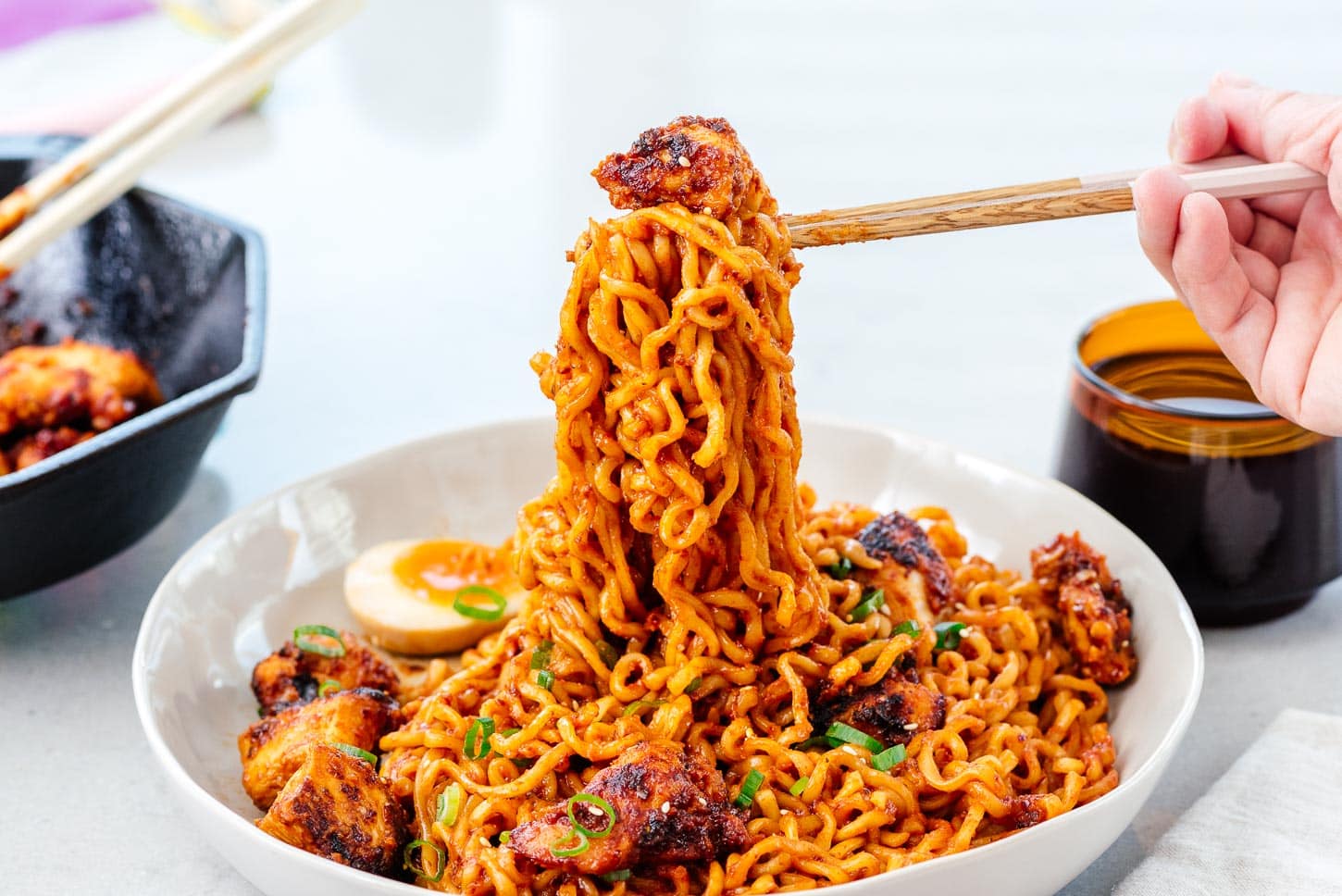
That’s it! Hope you guys get your spice on!


Buldak Noodles
#wprm-recipe-user-rating-0 .wprm-rating-star.wprm-rating-star-full svg * { fill: #f5a623; }#wprm-recipe-user-rating-0 .wprm-rating-star.wprm-rating-star-33 svg * { fill: url(#wprm-recipe-user-rating-0-33); }#wprm-recipe-user-rating-0 .wprm-rating-star.wprm-rating-star-50 svg * { fill: url(#wprm-recipe-user-rating-0-50); }#wprm-recipe-user-rating-0 .wprm-rating-star.wprm-rating-star-66 svg * { fill: url(#wprm-recipe-user-rating-0-66); }linearGradient#wprm-recipe-user-rating-0-33 stop { stop-color: #f5a623; }linearGradient#wprm-recipe-user-rating-0-50 stop { stop-color: #f5a623; }linearGradient#wprm-recipe-user-rating-0-66 stop { stop-color: #f5a623; }
Ingredients
- 1 tbsp gochujang
- 1 tbsp gochugaru
- 2 tsp soy sauce
- 1 tsp chicken bouillon
- 1 tbsp rice vinegar
- 1 tsp garlic powder
- 1 tsp sugar
- 1/2 tsp toasted sesame oil
- 1 portion cooked noodles of choice
- 2-4 tbsp noodle water as needed
Instructions
-
In a bowl, mix together the gochujang, gochugaru, soy sauce, chicken bouillon, rice vinegar, garlic powder, sugar, and toasted sesame oil.
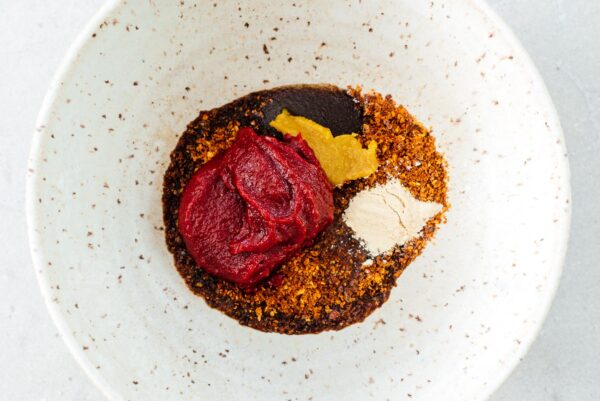
-
Cook the instant ramen according to the package, save 1/4 cup water and drain well.
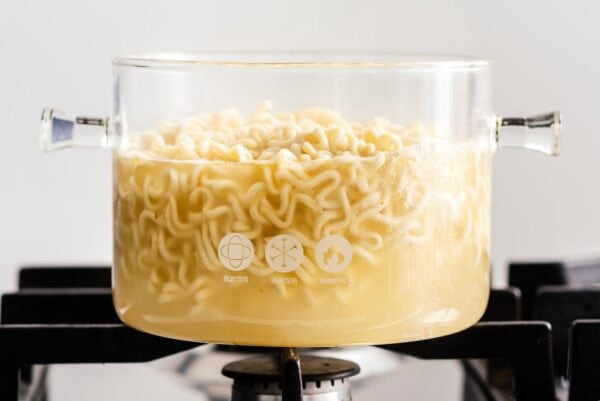
-
Toss the noodles in the sauce, loosening with extra noodle water if needed. Top with sliced green onions, toasted sesame seeds, and seaweed and enjoy!
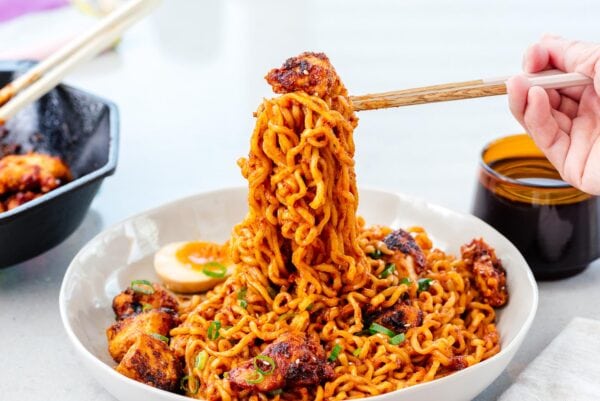
Notes
Estimated nutrition does not include your noodles of choice.
Estimated Nutrition
Calories from Fat 21

